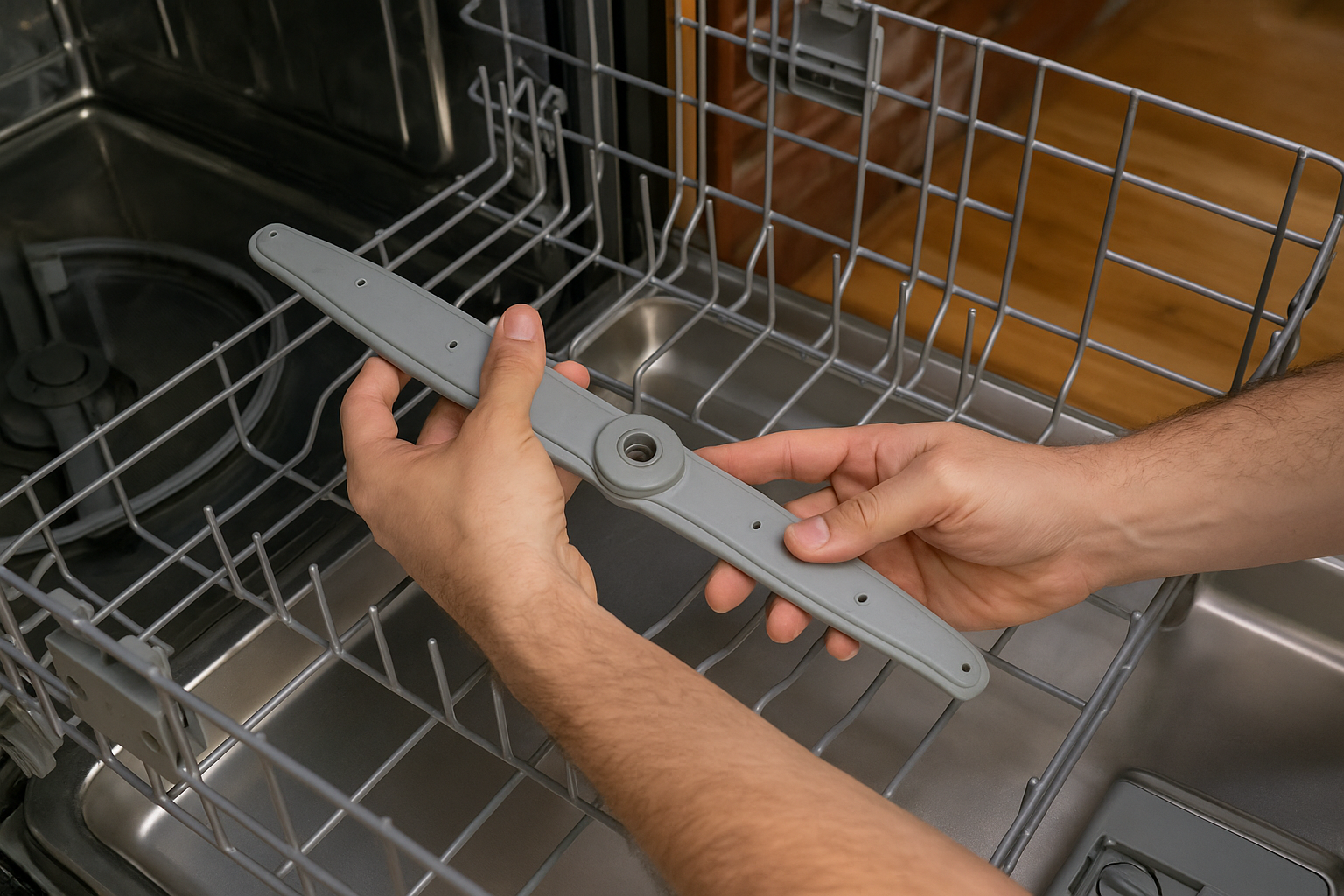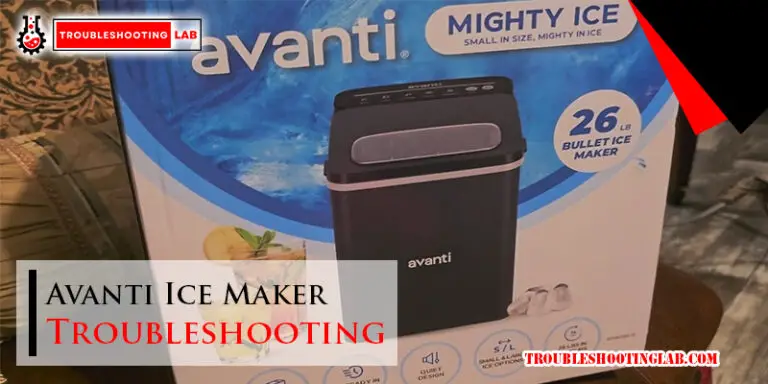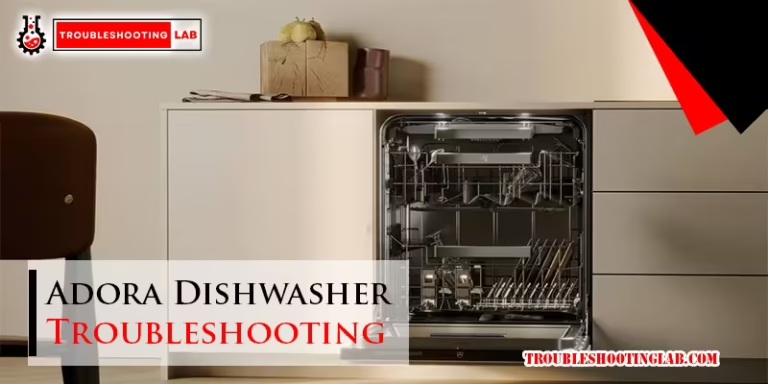Kitchenaid Dishwasher Spray Arm Troubleshooting: Quick Fixes
Is your KitchenAid dishwasher leaving your dishes less than sparkling? The culprit might be the spray arm.
When your dishwasher isn’t performing at its best, it can be frustrating, especially when you’re left with greasy plates or stubborn food particles. But don’t worry—you’re not alone, and there’s no need to feel overwhelmed. Understanding and troubleshooting your KitchenAid dishwasher’s spray arm could be the quick fix you need to get back to enjoying spotless dishes.
In this guide, we’ll walk you through simple steps to diagnose and resolve common spray arm issues. You’ll discover how easy it is to restore your dishwasher’s performance and ensure your kitchen routine runs smoothly. Curious to find out how? Keep reading to uncover the secrets to a perfectly functioning dishwasher!

Credit: www.youtube.com
Common Spray Arm Issues
Kitchenaid dishwasher spray arms can face clogs from food debris. This leads to poor cleaning performance. Regular cleaning and checking for blockages help maintain their efficiency. Misalignment or wear might cause unusual noises or ineffective spraying. Simple adjustments often resolve these common issues, ensuring smooth operation.
When your Kitchenaid dishwasher isn’t cleaning dishes properly, the spray arm could be the culprit. The spray arm is responsible for distributing water evenly throughout the dishwasher. If it’s not functioning correctly, your dishes won’t be cleaned as effectively. Understanding common spray arm issues can help you troubleshoot and solve the problem quickly.Clogged Spray Arm
A clogged spray arm is a frequent issue. Food particles and debris can get stuck in the tiny holes of the spray arm. This blockage prevents water from spraying out effectively. To fix it, remove the spray arm and rinse it under warm water. Use a toothpick or a small brush to clear out any stubborn debris. Regular cleaning can prevent future clogs and keep your dishwasher running smoothly.Damaged Spray Arm
Sometimes, the spray arm might be damaged. Cracks or breaks can occur from regular use or accidental mishandling. A damaged spray arm won’t distribute water properly, affecting the cleaning performance. Examine the spray arm closely for any visible damage. If you spot any cracks, consider replacing it. You’d be surprised how much difference a new spray arm can make!Loose Spray Arm
A loose spray arm can wobble and not spin correctly. This can result in uneven cleaning and even damage to your dishwasher. You might hear a strange noise if the arm is loose. Check if the spray arm is securely attached. If it’s not, tighten it according to the dishwasher manual. Ensuring a snug fit can enhance your dishwasher’s efficiency. Have you faced any of these spray arm issues with your Kitchenaid dishwasher? Addressing them promptly can save you from the frustration of unclean dishes. Plus, a well-maintained dishwasher is an investment in your kitchen’s efficiency.
Credit: www.kitchenaid.com
Identifying The Problem
Issues with your Kitchenaid dishwasher can be frustrating. The spray arm is a common trouble spot. Identifying the problem early can save time. It can also save money. Follow these steps to diagnose the issue.
Visual Inspection
Start by opening the dishwasher door. Look at the spray arm carefully. Is there any visible damage? Cracks or breaks can affect its function. Check for food particles stuck in the holes. These can block water flow. Make sure the spray arm moves freely. If it sticks, it may need cleaning.
Listening For Unusual Noises
Run a short cycle with no dishes. Listen closely for strange sounds. Grinding or banging noises are warning signs. They often indicate an issue with the spray arm. It might be hitting something inside. Or, it may be loose. Identify where the sound comes from. This can help pinpoint the problem.
Checking Dishwasher Performance
Notice if dishes aren’t clean after a cycle. This can signal a spray arm problem. Watch for water spots or leftover food. They suggest water isn’t reaching all areas. Test by placing a cup upright on the top rack. If it doesn’t fill with water, the spray arm might be blocked.
Quick Fix Solutions
Experiencing issues with your KitchenAid dishwasher spray arm? Don’t worry! Quick fixes can often resolve common problems, ensuring your dishes come out sparkling clean. Let’s explore some easy solutions to get your dishwasher back in top shape.
Cleaning The Spray Arm
Blocked spray holes can affect water flow. First, remove the spray arm from the dishwasher. Use a toothpick or small brush to clear debris from the holes. Rinse it under warm water to remove any remaining dirt. Ensure all holes are free of obstructions.
Tightening Loose Connections
Loose connections can lead to improper functioning. Check the connections that attach the spray arm to the dishwasher. Use a screwdriver to tighten any screws or bolts. Ensure the spray arm is securely attached and able to rotate freely.
Replacing Damaged Parts
Cracks or breaks can hinder performance. Inspect the spray arm for any visible damage. If you notice cracks, it’s time to replace it. Purchase a replacement part from a trusted source. Follow the manufacturer’s instructions for installation. This ensures proper fit and function.

Credit: kitchpulse.com
Preventive Measures
Kitchenaid dishwashers are reliable, but spray arm issues can arise. Taking preventive measures can save you time and frustration. Simple habits can keep your dishwasher running smoothly. Let’s explore some effective steps to prevent spray arm problems.
Regular Cleaning Routine
Regular cleaning is crucial for a well-functioning dishwasher. Dirt and food particles can clog the spray arms. Remove and rinse the spray arms at least once a month. This simple step keeps water flowing freely. Check for any blockages in the holes. Use a toothpick or a brush to clear them.
Proper Loading Techniques
Loading your dishwasher correctly prevents spray arm obstructions. Avoid overcrowding the racks. Leave space between dishes for water to reach all surfaces. Place larger items on the sides or back. This allows the spray arms to spin without interruption. Ensure nothing hangs below the racks.
Using The Right Detergent
The right detergent makes a big difference. Use a detergent recommended by Kitchenaid. Too much detergent can cause buildup. This buildup affects the spray arm’s performance. Follow the detergent instructions closely. This ensures optimal cleaning and prevents residue.
When To Seek Professional Help
When your Kitchenaid dishwasher spray arm doesn’t seem to be working properly, you might wonder if it’s time to call in a professional. Sometimes, despite your best efforts, issues persist, repairs become complex, or warranty considerations come into play. Knowing when to seek expert help can save you time and hassle.
Persistent Issues
If you’ve already tried basic troubleshooting steps like cleaning the spray arms and checking for blockages, but the problem persists, it might be time to call a professional. No one wants to spend hours tinkering with a stubborn appliance that refuses to cooperate. Imagine this: You’ve scrubbed the arms, tightened loose screws, but the dishes still come out dirty. This is when expert help can pinpoint the issue and get your dishwasher back on track.
Complex Repairs
Some repairs might be beyond the reach of a typical DIY approach. For example, if the spray arm mechanism is damaged or needs a complete replacement, it can be complex. Would you really want to dismantle the entire dishwasher without knowing if you can put it back together? Professionals have the right tools and knowledge to handle intricate repairs safely and efficiently.
Warranty Considerations
Is your dishwasher still under warranty? Attempting repairs yourself could void it. Wouldn’t it be frustrating to miss out on a free repair because you took matters into your own hands? Check the terms of your warranty. Often, manufacturers require that repairs be performed by authorized technicians to maintain coverage. Knowing when to step back and let the professionals do their job can keep your warranty intact.
Seeking professional help isn’t admitting defeat—it’s a smart move when faced with persistent issues, complex repairs, or warranty concerns. Have you ever encountered a dishwasher problem that seemed impossible to solve? Sometimes, calling in the experts is the most efficient way to restore your appliance to its full function.
Frequently Asked Questions
Why Is My Kitchenaid Dishwasher Spray Arm Not Spinning?
The spray arm may be blocked. Check for debris or food particles. Clean the arm if necessary.
How Do I Clean A Clogged Spray Arm?
Remove the spray arm. Rinse under warm water. Use a toothpick to clear holes. Reinstall.
Can A Broken Spray Arm Affect Cleaning?
Yes, a broken spray arm can lead to poor cleaning results. Replace it to ensure effective washing.
How Often Should I Inspect The Spray Arm?
Inspect monthly. Regular checks help maintain performance. Look for blockages or wear and tear.
Is It Easy To Replace A Spray Arm?
Yes, replacing is simple. Follow the manual instructions. Most spray arms snap off and on easily.
Conclusion
Fixing your KitchenAid dishwasher’s spray arm can be simple. Start with cleaning it. Use a soft brush or cloth to remove debris. Check for blockages in holes. Replace the spray arm if damaged. Regular maintenance keeps your dishwasher working well.
Inspect seals and connections often. This prevents leaks and ensures efficiency. If issues persist, consult a professional. A well-functioning dishwasher saves time and effort. Enjoy clean dishes every day. Keep it running smoothly with these tips. Happy dishwashing!




